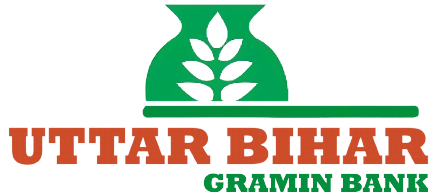Bihar Gramin Bank Personal Loan can provide quick cash for short-term needs. These loans aim to cover expenses where savings, family support, or small credit cards fall short. In this guide I explain what the loan commonly covers, who can apply, limits, safety rules, costs, and how to get approval faster. I also answer practical FAQs you will actually use when deciding to borrow.
What needs it covers
Personal loans from Bihar Gramin Bank are meant for non-business household needs. Typical uses include:
- Medical emergencies: Hospital bills, surgeries, and medication. Banks treat this as urgent, so documentation of the hospital bill speeds approval.
- Education costs: Tuition, coaching, and exam fees for family members. If you submit admission proof, banks view this as a productive use.
- Home repair and appliances: Roof work, electrical repairs, or buying a refrigerator. These improve living standards and are low-risk for banks.
- Marriage or family events: One-time expenses for ceremonies. Banks accept these but expect timely repayment plans.
- Debt consolidation: Repaying expensive informal loans or credit-card debt to reduce overall interest cost.
Why banks allow these: these needs are time-bound and measurable. That makes repayment projections clearer for the lender.
Who’s eligible
Eligibility is straightforward but depends on profile and local branch rules. Typical criteria:
- Resident of the bank’s operational area: Bihar Gramin Bank serves specific districts. You must have local residence or a strong local connection.
- Age: Usually 21 to 60 years at loan maturity. Banks avoid loans that stretch past retirement age because repayment risk rises.
- Stable income: Salaried, pensioners, or self-employed with regular income. The bank will check income to size the loan safely.
- Good repayment history: A clean credit record or limited rural-bank borrowing history helps. Banks consider CIBIL scores and past defaults.
Why these matter: eligibility reduces the lender’s risk. Stable income and locality make recovery and contact simpler for the bank.
Exclusions
Personal loans are not for all purposes. Common exclusions include:
- Speculative investments: Stock trading or cryptocurrency. These are volatile and increase default risk.
- Commercial business capital: Loans for running a business usually fall under business loans, not personal loans.
- Illegal activities: Funding anything unlawful is strictly prohibited.
Banks set exclusions to reduce default probability and comply with regulations.
Loan amount & margin
The sanctioned amount depends on income, repayment capacity, and credit history. Typical ranges at regional rural banks:
- Small loans: Rs. 10,000 to Rs. 50,000 for urgent household needs.
- Moderate loans: Rs. 50,000 to Rs. 2,00,000 for education, medical, or consolidation.
- Higher amounts: Up to Rs. 5,00,000 in exceptional cases with strong income and security.
Margin means the borrower’s contribution if the loan requires partial security. For unsecured personal loans, margin is usually zero. If collateral is involved, margin rules vary. Banks apply margin to reduce their exposure and ensure borrower commitment.
Security/guarantee
Personal loans can be:
- Unsecured: No collateral for smaller amounts. Approval relies on income and credit history. This is quick but limited in size.
- Secured: Require collateral (fixed deposit, gold, or property charge) for larger loans. Security lowers interest and increases loan size.
- Third-party guarantee: Sometimes banks accept a co-applicant or guarantor with stable income. This reduces the bank’s risk.
Why security matters: collateral protects the bank if repayment stops. It also allows borrowers with weaker credit to access higher amounts.
Repayment period
Repayment terms vary by amount and borrower profile. Common tenures:
- Short term: 6 to 24 months for small emergency loans.
- Medium term: 24 to 60 months for larger needs like education or home improvements.
- Longer tenure: Up to 7 years in rare cases with collateral or secured products.
Choose a shorter tenure if you can. It saves interest over time. If cash flow is tight, a longer tenure lowers monthly EMIs but increases total interest paid.
Interest rates
Interest rates depend on whether the loan is secured, the tenure, and the borrower’s risk profile. Typical ranges you can expect at regional rural banks:
- Unsecured loans: Higher rates because the bank takes more risk. Expect rates above typical home-loan rates.
- Secured loans: Lower rates due to collateral. Rates may be similar to small personal-loan offers from public sector banks.
Examples: a borrower with steady salary might get a lower rate than a small trader with irregular receipts. Always ask the branch for the effective interest rate and the annual percentage rate (APR). That shows the true cost including fees.
Documents & approval tips
Carry these documents to speed approval:
- Identity proof: Aadhaar, passport, or voter ID.
- Address proof: Aadhaar, utility bill, or ration card.
- Income proof: Last 3 months’ salary slips for salaried employees; last 2 years’ ITR and bank statements for self-employed.
- PAN card for large loans and tax compliance.
- Bank statements: 6 months to 1 year of statements to show cash flow.
- Photographs as per KYC norms.
Approval tips:
- Build a relationship with your branch: Existing account holders with savings history get faster decisions. Banks prefer known customers because bank statements show reliable behavior.
- Improve credit score: A good credit history reduces interest and speeds approval.
- Prepare clear use proof: For example, hospital bills for medical loans or admission letters for education loans. This makes the purpose verifiable and the bank more willing to lend quickly.
- Limit documentation gaps: Incomplete papers cause delays. Verify everything before submission.
FAQs
Q: How fast is disbursal?
A: For small unsecured loans to existing customers, disbursal can happen within a few days. For larger or secured loans, it may take 1–3 weeks due to valuation and paperwork. Speed depends on documentation and branch workload.
Q: Can I prepay the loan?
A: Most banks allow prepayment. Some charge a small fee, especially for floating-rate loans. Ask the bank for the exact prepayment policy because it affects total cost.
Q: What happens if I miss an EMI?
A: Missing EMIs triggers late fees and affects your credit score. Notify the branch quickly. They may offer restructuring or a short moratorium if you show proof of temporary hardship.
Q: Can I apply online?
A: Many branches accept online inquiries or applications but final KYC and signatures usually require a branch visit. Applying online speeds up paperwork but does not always eliminate in-person checks.
Q: Is a guarantor always required?
A: Not for small unsecured loans to salaried borrowers. A guarantor or collateral is common when the loan amount exceeds unsecured limits or when the borrower’s credit profile is weak.
If you plan to apply, visit your nearest Bihar Gramin Bank branch with complete documents and a clear purpose. That gives the best chance for quick approval and disbursal.

Kritti Kumari is a banker and MBA graduate who writes about banking, finance, and customer-friendly services. She simplifies complex financial products into easy guides, helping readers understand Bihar Gramin Bank’s offerings and make smarter money decisions.

